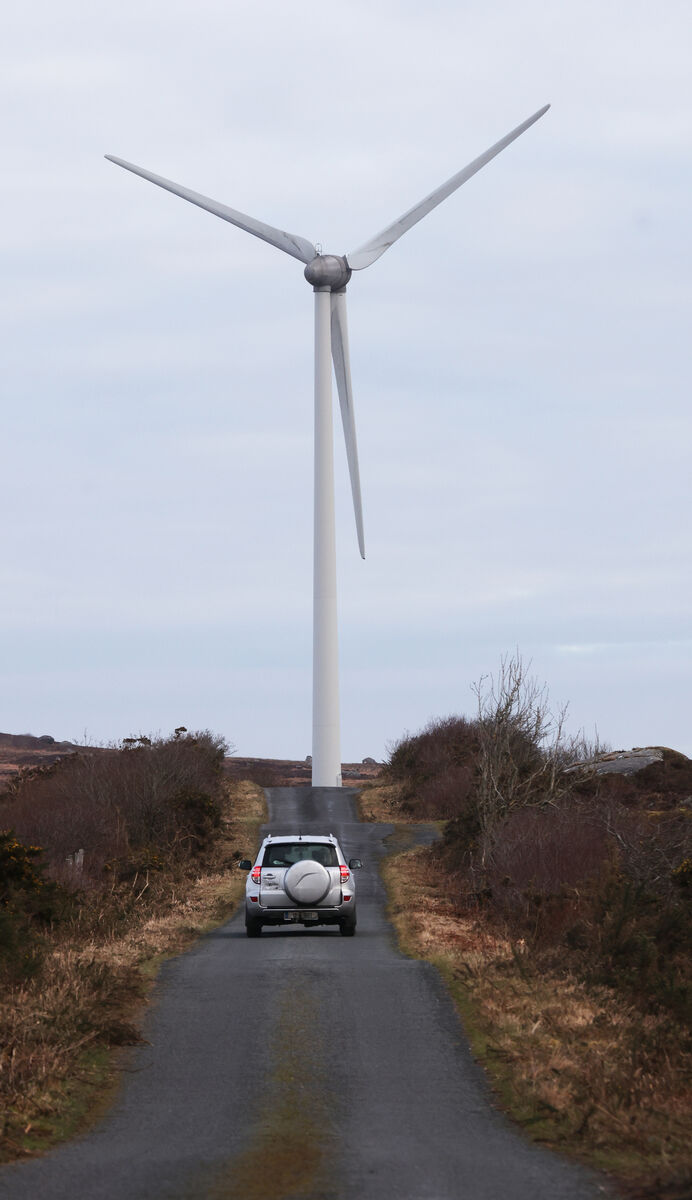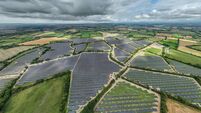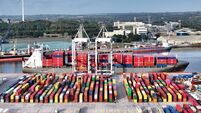Can 'Dynamic Line Rating' get more renewables onto grid and cut electricity prices?

Dynamic Line Rating enables overhead lines – in the right weather conditions – to carry more power, sometimes up to 40-50% more.
Irish electricity prices are too high, writes of Wind Energy Ireland, and too much wind power is being wasted every year. A new technology – Dynamic Line Rating – could be deployed quickly to get more renewable energy on the system and to help protect consumers

Irish wind farms are doing more than any other technology to protect Irish electricity consumers by reducing our reliance on the imported fossil fuels that are driving up our bills.
In September, for example, the wholesale price of electricity on the days when we used the most wind energy averaged out at €62 but this nearly doubled to €117 on the days when we had to rely almost entirely on imported gas.
The simple reality is the more, and longer, we rely on imported gas for our electricity the higher our bills are going to be.
That means more hardship for families struggling to pay their bills, more worries for small businesses dreading the arrival of the electricity bill and more challenges attracting investment into a country with some of the highest prices in Europe.
We need to get more wind energy onto the system. Just up until the end of September nearly 17 per cent of the electricity that wind farms on the island of Ireland could have produced was lost. That’s enough to power one in every six Irish homes for a full year.

According to Aurora Energy Research this wasted energy was worth €450 million in 2024 alone. Every time those wind farms are instructed to stop producing electricity expensive gas generation comes onto the system and pushes up everyone’s bills.
Despite the best efforts of EirGrid and ESB Networks our electricity grid is simply not able to cope with what is being produced today, let alone meet future demands from offshore wind, solar generation and the electrification of our economy.
We need to make Ireland’s electricity grid stronger but that is going to take time while Irish electricity consumers are suffering right now. One technology that could help much faster, and has been successfully implemented across Europe, is something called Dynamic Line Rating.
Before explaining what it is you need to understand a little bit about how electricity moves across overhead lines.
Every overhead power line in Ireland has a rating, which sets the maximum amount of electricity that is allowed onto that line at any one time. Putting more power onto the line than the rating allows for could lead it to overheat which poses a safety risk.
The rating for each line is changed throughout the year so there is a different one for spring, summer, autumn and winter. This is because the rating of an individual line is not just down to the mechanical or technical qualities of the actual cable, but also the temperature of the cable. This means that it is also affected by how windy or warm a day it is.
This is why, in winter, lines can carry more power than in the summer. The colder temperatures help to cool the lines which allows them to safely carry more electricity. It also means that when the wind is blowing, the wind can cool the power lines down and affect their performance.
While this is helpful to moving electricity around during the colder months it is also a bit of a blunt instrument.
The approach to setting ratings for lines is the same across the country. So, for example, the assumption is that the temperature in Ireland during the summer is a constant 25 degrees but I’m not sure that’s the kind of heat that comes to mind when people think of a normal Irish summer.
It also means we’re not allowing for regional variation. It could be cold and windy in Donegal, for example, while it’s warm and sunny in Cork.
Put simply, there are times when our electricity grid could be carrying a lot more power safely but cannot do so because we must apply a line rating which is far too conservative and based on weather conditions far warmer than are present.
This is where Dynamic Line Rating comes in. The equipment to facilitate Dynamic Line Rating are small pieces of kit which are clipped on to overhead lines. They closely monitor line performance as well as the impact of local environmental factors like temperature, wind speed and direction, humidity etc.
This enables the electricity grid operator to have accurate, real-time, information about how much power a line could carry at any moment. Used effectively, the rating for the power line is no longer ‘fixed’, it is ‘dynamic’ and adjusts itself automatically within boundaries set by the grid operator based on what the line can actually carry.
Dynamic Line Rating enables overhead lines – in the right weather conditions – to carry more power, sometimes up to 40-50 per cent more. It can relieve pressure on the grid and help to accommodate more renewable energy, reducing the amount of power we’re currently losing every year and helping to protect Irish electricity consumers.
Finland recently announced that they are going to install Dynamic Line Rating on its entire transmission network over the next couple of years. Deployment is also underway in Germany, France, Belgium, Italy and Spain as they move from pilot projects to full operation.
A pilot project here in Ireland, run by EirGrid, has been successful and accelerating the move from testing to implementation can only help get more renewable power on the system, cutting bills and cutting carbon emissions.
It’s not a cure-all. It will work better on some lines than others and while it can increase the amount of power a line can carry there is only so much that it can do.
The reality is we will still need new lines, cables and substations. We urgently need the North-South Interconnector, arguably the single most important grid reinforcement project on the island, to be delivered as quickly as possible.
We know there is support for this from the Government and the announcement in July of an investment of €3.5 billion in our electricity grid can be transformative, helping to build a modern electricity grid that is resilient, that keeps the lights on, and is efficient, maximising the use of Ireland’s most affordable energy.
But while working to develop and deliver those grid infrastructure projects Dynamic Line Rating has the potential to make a real difference and to get the best possible use out of both our existing, and our planned, infrastructure.
We need to be open to every way we can work together to make electricity less expensive to help struggling electricity consumers and support our businesses and economy.













